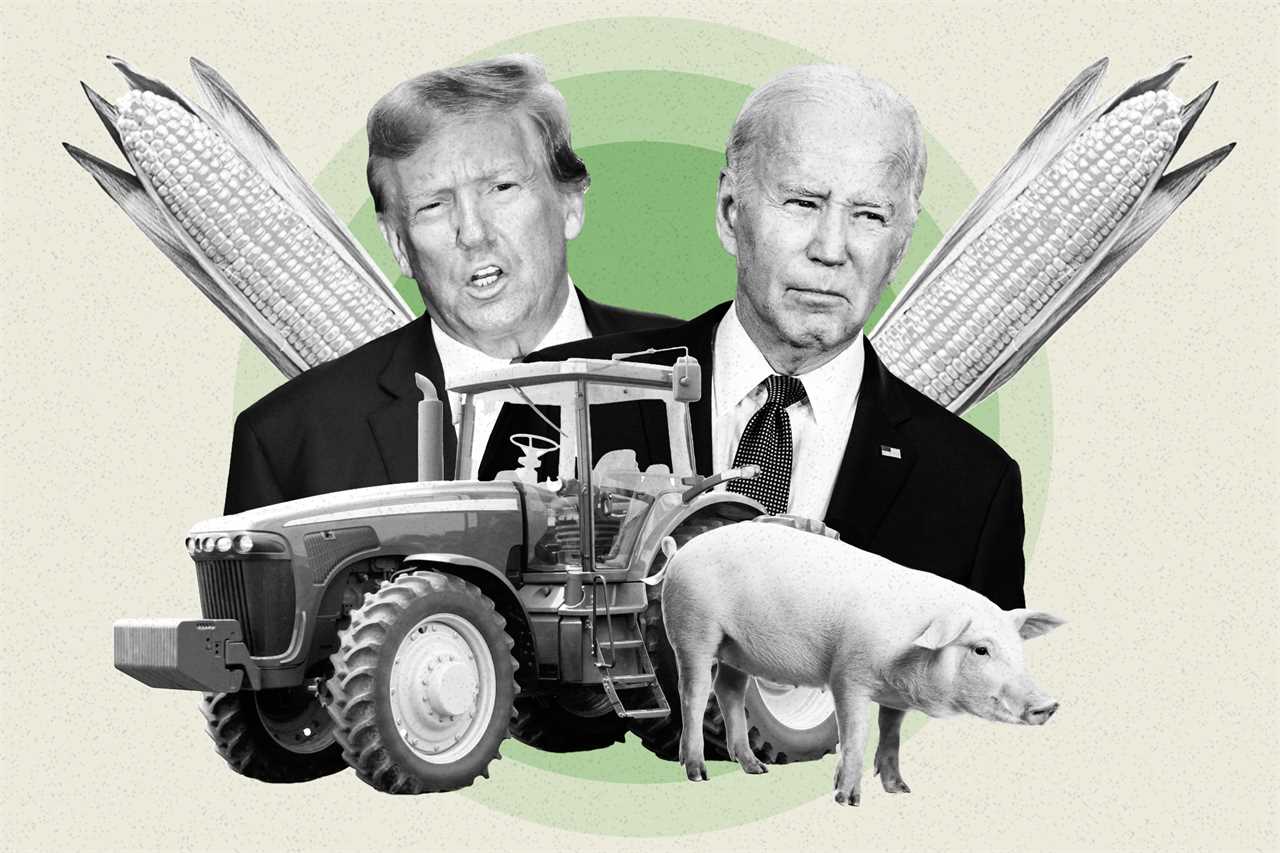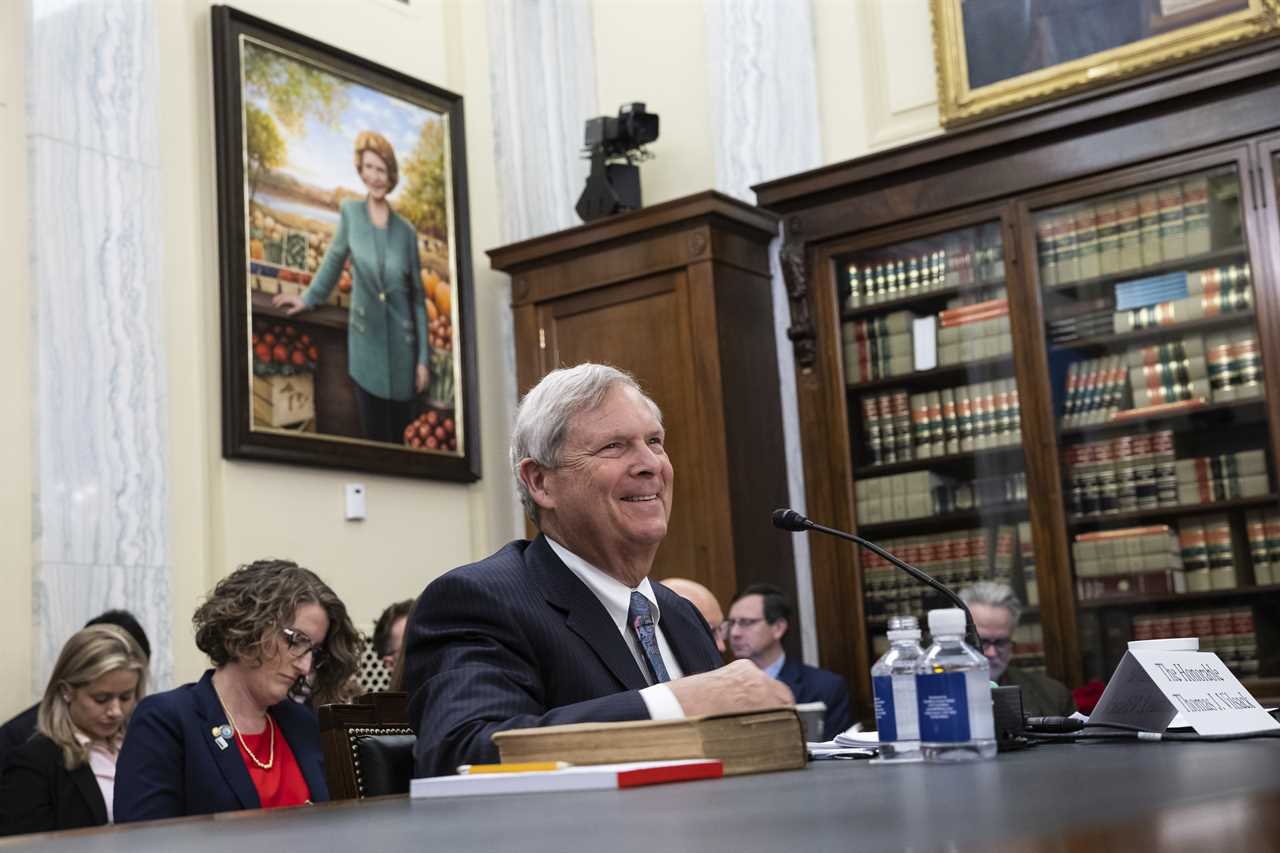
To hear former President Donald Trump tell it, America’s farmers never had it so good as during his four years in the White House.
“Look I did get you $28 billion, in all fairness, right? Who the hell else would get you $28 billion from China?” Trump asked a crowd in Sioux Center, Iowa last week, part of his final campaign push ahead of the state’s GOP caucuses Monday.
The $28 billion Trump mentioned didn’t actually come from China, however. It was paid out by the U.S. government to compensate farmers harmed by Trump’s trade war with Beijing.
As for his question, who else could get that much money for farmers, the answer is: the Biden administration.
In fact, over the first three years of their presidencies, Biden and Trump’s payments to farmers are virtually identical: A POLITICO analysis found that both men authorized nearly $57 billion in direct federal payments to farmers over that time span.
Nearly half of Trump's total $109 billion in direct payments were delivered in his final year, 2020, when USDA paid farmers more than $52 billion, an unprecedented sum since USDA began recording farm payment data in 1933.
And those tallies don't include billions in other types of farm support, like crop insurance and loan financing — traditionally the largest types of ag subsidies.
The U.S. government has long subsidized domestic agriculture to help farmers manage their financial risks and obligations through insurance and loans, in addition to sending direct payments to compensate farmers for lost income due to disasters — natural, or, in the case of Trump’s trade war fallout, man-made. Congress determines the payment calculations for most of those programs, via the every-five-year farm bill. But Trump and Biden have ratcheted up disaster-related payments to farmers, which the administration has far more control over. The lion's share of the USDA payments under both Trump and Biden, for example, came as a response to the Covid-19 emergency.
By other measures, Biden has been better for farmers than Trump: Net farm income has actually gone up since the Democrat entered the White House. On average, net farm income has totaled $165 billion between 2021 and 2023, compared to $94 billion between 2017 and 2019. Farm income reached a record high of nearly $189 billion in 2022. And while it is projected to drop off in 2023 (USDA is still tallying receipts from December 2023), it remains above the 20-year average for receipts.
The challenge for Biden is convincing farmers, who lean heavily Republican, that he’s been just as good if not better for their bottom lines than Trump, should the two face a rematch in 2024. For Democrats, chipping away at Republicans’ margins of victory in rural areas is critical to their 2024 hopes of maintaining the White House and Senate — and winning back the House.
The administration has leaned heavily on Agriculture Secretary Tom Vilsack and USDA to try and change voters’ minds in agriculture-heavy areas. In the past several months, the former Iowa governor has visited Minnesota, Maine, Washington and the early primary state of New Hampshire to tell farmers about the gravy train Biden has brought to town — and how his administration is working to distribute the recent surge in ag profits to farmers across the spectrum, not just the largest ag conglomerates.
"Beyond providing over $56 billion in specific direct federal assistance programs to support American farmers who feed our country and the world, the President has taken unprecedented executive action to level the playing field so small and mid-sized farmers can get a fair price for their products, while making billions of dollars in transformative investments through the American Rescue Plan and Inflation Reduction Act," White House spokesperson Jeremy Edwards said in a statement to POLITICO.

Joe Glauber, who served as USDA chief economist under former President Barack Obama, says the surge in farm income under Biden is a more important metric than Trump’s record government pay-outs.
“If you take out the trade war payments, you take out the pandemic assistance, … the Trump years were pretty low in terms of income,” said Glauber, who now serves as a senior research fellow at the International Food Policy Research Institute. “That would have taken it down to probably one of the lowest levels that we’ve had in several years.”
Trump campaign spokesperson Steven Cheung did not respond to a request for comment, nor did The Trump campaign's Iowa agriculture adviser, Republican state Rep. Bobby Kaufmann.
Trump dominated the rural vote in 2016 and expanded his vote share against Biden in 2020, despite trade policies that hammered farmers. He is expected to secure an easy victory on Monday in the Iowa caucuses, where rural voters and other people employed in agricultural industries have outsized sway.
But the former president's proposals on trade are rattling some in the agriculture industry, which is fearful of another prolonged trade war.
Glauber, for one, warned that should Trump be reelected, the former president’s plan to aggressively expand tariffs risks triggering another trade war that would “really hurt U.S. agriculture.”
“If I were a presidential candidate, I certainly would be pounding on that point,” Glauber added.
----------------------------------------
By: Garrett Downs
Title: Trump touts his record payments to farmers. But Biden isn't far behind.
Sourced From: www.politico.com/news/2024/01/14/trump-biden-farmers-00135396
Published Date: Sun, 14 Jan 2024 07:00:00 EST
Did you miss our previous article...
https://consumernewsnetwork.com/politics-us/the-navy-is-struggling-to-replace-ships-as-the-middle-east-heats






